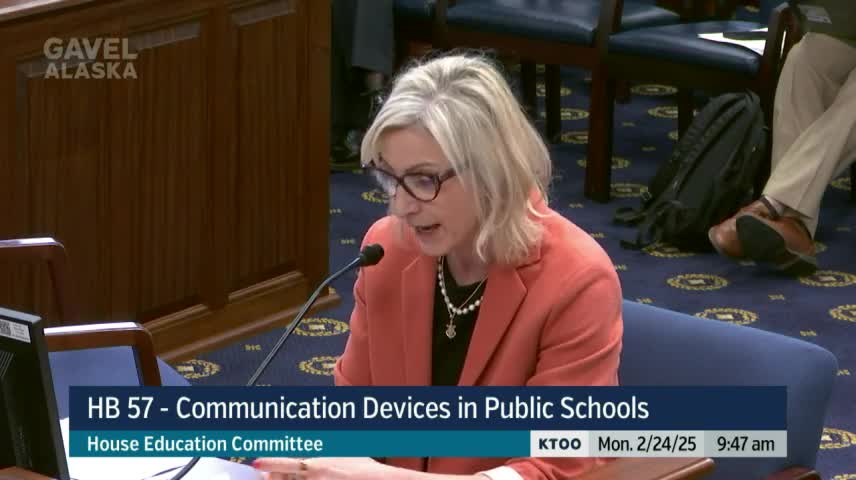Alaska Education Board supports cell phone ban during school hours to protect students
February 24, 2024 | 2025 Legislature Alaska, Alaska

This article was created by AI summarizing key points discussed. AI makes mistakes, so for full details and context, please refer to the video of the full meeting. Please report any errors so we can fix them. Report an error »

In a recent meeting of the Alaska House Education Committee, lawmakers and education officials engaged in a critical discussion about the impact of cell phone use on students' mental health and academic performance. The meeting, held on February 24, 2025, highlighted the urgent need for systemic solutions to address the challenges posed by technology in educational settings.
One of the key points raised during the meeting was the detrimental effect of online negativity on youth development. A speaker emphasized that adolescents, whose brains are still developing, are particularly vulnerable to the harmful impacts of mean-spirited online interactions. This concern was framed as part of a broader epidemic that necessitates comprehensive strategies to protect students' mental well-being.
The discussion centered around a proposed policy to limit cell phone use during school hours. Advocates argued that creating a cell phone-free environment would empower students to focus on their education, foster peer connections, and build resilience in an increasingly complex world. The proposal aligns with recommendations from the State Board of Education, which has called for model policies to restrict cell phone use in schools.
Participants acknowledged that addressing the issue of cell phone addiction cannot be tackled in isolation. A collaborative approach involving parents, schools, and community organizations was deemed essential to create a supportive environment that encourages limited device use. The idea is to establish a cultural shift where reduced cell phone use is seen as a positive choice among students.
The meeting also touched on practical considerations regarding the implementation of such policies. Questions arose about whether students would be allowed to take their phones off campus during lunch breaks. The intent of the proposed legislation is to keep phones "off and away" throughout the school day, with flexibility for individual districts to determine how best to enforce this guideline.
As the committee continues to deliberate on this significant issue, the discussions reflect a growing recognition of the need to balance technology use with the mental health and educational needs of students. The outcomes of these conversations could shape the future of educational policies in Alaska, emphasizing the importance of creating a conducive learning environment for all students.
One of the key points raised during the meeting was the detrimental effect of online negativity on youth development. A speaker emphasized that adolescents, whose brains are still developing, are particularly vulnerable to the harmful impacts of mean-spirited online interactions. This concern was framed as part of a broader epidemic that necessitates comprehensive strategies to protect students' mental well-being.
The discussion centered around a proposed policy to limit cell phone use during school hours. Advocates argued that creating a cell phone-free environment would empower students to focus on their education, foster peer connections, and build resilience in an increasingly complex world. The proposal aligns with recommendations from the State Board of Education, which has called for model policies to restrict cell phone use in schools.
Participants acknowledged that addressing the issue of cell phone addiction cannot be tackled in isolation. A collaborative approach involving parents, schools, and community organizations was deemed essential to create a supportive environment that encourages limited device use. The idea is to establish a cultural shift where reduced cell phone use is seen as a positive choice among students.
The meeting also touched on practical considerations regarding the implementation of such policies. Questions arose about whether students would be allowed to take their phones off campus during lunch breaks. The intent of the proposed legislation is to keep phones "off and away" throughout the school day, with flexibility for individual districts to determine how best to enforce this guideline.
As the committee continues to deliberate on this significant issue, the discussions reflect a growing recognition of the need to balance technology use with the mental health and educational needs of students. The outcomes of these conversations could shape the future of educational policies in Alaska, emphasizing the importance of creating a conducive learning environment for all students.
View full meeting
This article is based on a recent meeting—watch the full video and explore the complete transcript for deeper insights into the discussion.
View full meeting
